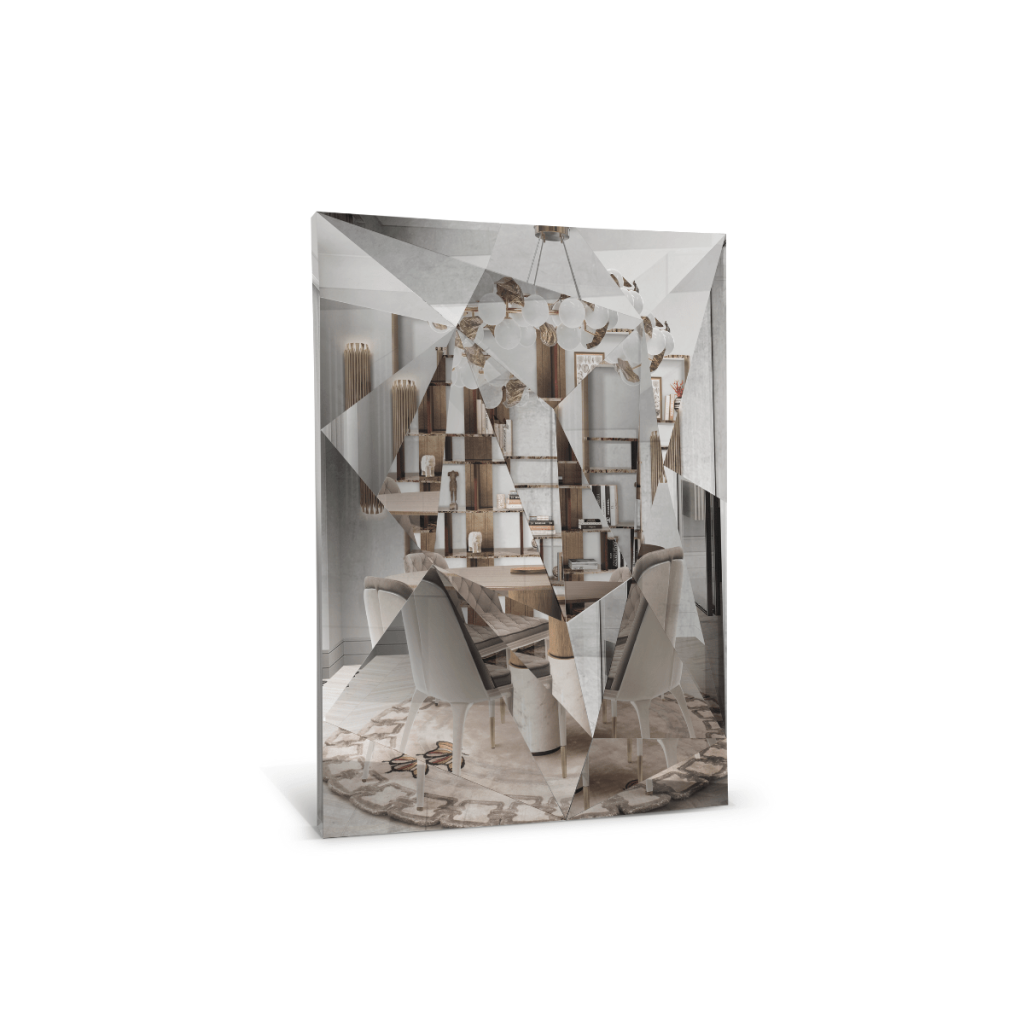Discover The Mesmerizing World Of Mirror Fractals: Unlock Limitless Reflections And Unleash Your Creativity!
Mirror Fractal: A Fascinating Phenomenon in Mathematics
Greetings, Readers! Today, we delve into the captivating world of mirror fractals, a mesmerizing mathematical concept that has puzzled and fascinated mathematicians and enthusiasts alike. In this article, we will explore the intricacies and beauty of mirror fractals, their applications, and their significance in the field of mathematics. So, let’s embark on this journey together and uncover the magic behind mirror fractals.
Introduction
Fractals have long been a subject of intrigue, captivating both mathematicians and artists. These infinitely complex patterns have the ability to mesmerize us with their self-similarity and intricate details. One such fascinating type of fractal is the mirror fractal, also known as the self-reflective fractal. Mirror fractals exhibit a unique property wherein they contain smaller versions of themselves, forming an infinite loop of reflection. This phenomenon creates visually stunning patterns that continue to astound and challenge our understanding of mathematics.
2 Picture Gallery: Discover The Mesmerizing World Of Mirror Fractals: Unlock Limitless Reflections And Unleash Your Creativity!


Throughout history, mirror fractals have been a subject of extensive research and exploration. Mathematicians have studied these intricate structures to gain insights into the underlying principles of self-similarity in nature and the universe. The applications of mirror fractals extend beyond mathematics, finding relevance in various fields such as computer graphics, physics, and even art.
What is a Mirror Fractal?
At its core, a mirror fractal is a type of fractal that exhibits self-reflective properties. These fractals display a repeating pattern of smaller versions of themselves, creating an infinite loop of reflection. The intricate details of mirror fractals emerge from the repetition of this self-similarity, resulting in visually stunning and infinitely complex patterns.
Properties of Mirror Fractals

Image Source: njmodern.com
1️⃣ Infinite Self-Similarity: Mirror fractals exhibit an infinite loop of reflection, with each iteration containing smaller versions of the original structure.
2️⃣ Intricate Detail: The repetition of self-similarity in mirror fractals leads to the emergence of intricate patterns and fine details.

Image Source: covethouse.eu
3️⃣ Fractal Dimension: Mirror fractals have a fractional dimension, which means they occupy a space between traditional integer dimensions.
4️⃣ Recursive Generation: Mirror fractals are generated through recursive algorithms, which involve repeating a set of instructions or patterns.
5️⃣ Self-Referentiality: Mirror fractals refer to themselves, creating a loop of reflection that reveals new details and patterns with each iteration.
6️⃣ Infinitely Complex: Mirror fractals exhibit an infinite complexity, with the level of detail increasing infinitely as you zoom into the structure.
Who Discovered Mirror Fractals?
🔍 The concept of mirror fractals has been explored by various mathematicians and researchers over the years. One of the pioneers in this field was the renowned mathematician Benoit Mandelbrot, who introduced the concept of fractals and their self-reflective properties to the world. His groundbreaking work on fractal geometry laid the foundation for understanding and studying mirror fractals.
Notable Contributions by Benoit Mandelbrot
1️⃣ Fractal Geometry: Mandelbrot’s groundbreaking book The Fractal Geometry of Nature introduced the concept of fractals to a wide audience, revolutionizing our understanding of natural structures and patterns.
2️⃣ Mandelbrot Set: Mandelbrot’s discovery of the Mandelbrot Set, a specific type of mirror fractal, brought widespread attention to the beauty and complexity of these mathematical structures.
3️⃣ Self-Reflective Properties: Mandelbrot’s research emphasized the self-reflective properties of fractals, highlighting their infinite recursion and intricate details.
4️⃣ Fractal Dimension: Mandelbrot developed the concept of fractal dimension, which measures the complexity and self-similarity of fractal structures, including mirror fractals.
5️⃣ Influence on Art: Mandelbrot’s work had a profound impact on the world of art, inspiring artists to incorporate fractal patterns and mirror fractals into their creations.
When Were Mirror Fractals Discovered?
📅 The discovery and exploration of mirror fractals can be traced back to the late 20th century. It was during this time that mathematicians like Benoit Mandelbrot and others began unraveling the mysteries of fractals and their self-reflective properties. Since then, mirror fractals have become a significant area of study, continually revealing new insights and applications.
Advancements in Mirror Fractals
1️⃣ Computer Graphics: With advancements in computing power, the visualization of mirror fractals has become more accessible, allowing for the creation of visually stunning and intricate renderings.
2️⃣ Fractal Art: Mirror fractals have inspired a new form of artistic expression, with artists using algorithms to create mesmerizing and unique pieces of fractal art.
3️⃣ Physics and Chaos Theory: Mirror fractals have found applications in physics and chaos theory, offering insights into the complex dynamics of natural phenomena.
4️⃣ Data Compression: The self-similarity and recursive nature of mirror fractals have been utilized in data compression algorithms, improving efficiency and reducing storage requirements.
5️⃣ Fractal Antennas: Mirror fractals have been applied in the design of antennas, enabling improved performance and increased bandwidth in wireless communication systems.
Where Can Mirror Fractals Be Found?
🌍 Mirror fractals can be found in various natural and artificial structures, showcasing their ubiquity and self-similarity in the world around us. Some of the common places where mirror fractals can be observed are:
Natural Phenomena
1️⃣ Snowflakes: The intricate and self-similar patterns of snowflakes exhibit mirror fractal properties, captivating us with their unique designs.
2️⃣ Trees and Plants: The branching patterns of trees and plants often display mirror fractal characteristics, repeating their structure at different scales.
3️⃣ Coastlines: The jagged and irregular shapes of coastlines exhibit self-similarity, forming mirror fractals when observed from a larger perspective.
4️⃣ Clouds: The fluffy and intricate patterns of clouds display self-reflective properties, creating fascinating mirror fractal formations.
5️⃣ Mountain Ranges: The jagged peaks and valleys of mountain ranges often exhibit self-similarity, forming mirror fractals when observed at different scales.
Artificial Structures
1️⃣ Architecture: The design and construction of buildings and structures can incorporate mirror fractal patterns, adding a visually appealing element.
2️⃣ Fabric Textures: Certain fabric textures, such as lace or intricate weaves, exhibit mirror fractal properties, creating visually stunning patterns.
3️⃣ Geometric Art: Artists often incorporate mirror fractal patterns in their creations, exploring the intricate symmetries and self-similarities.
4️⃣ Computer Graphics: The field of computer graphics utilizes mirror fractals to create visually stunning and realistic renderings of natural and artificial environments.
5️⃣ Data Visualization: Mirror fractals are utilized in visualizing complex data sets, allowing for a more intuitive understanding of the underlying patterns and structures.
Why Are Mirror Fractals Important?
🔑 The significance of mirror fractals lies in their ability to provide insights into the underlying principles of self-similarity and complexity in nature, art, and mathematics. Some key reasons why mirror fractals are important are:
Understanding Natural Structures
1️⃣ Self-Similarity in Nature: Mirror fractals help us understand the prevalence of self-similarity in natural structures, from the microscopic world of cells to the vastness of galaxies.
2️⃣ Chaos Theory: The study of mirror fractals contributes to chaos theory, providing insights into the complex behavior of dynamic systems and the emergence of order from chaos.
3️⃣ Pattern Formation: Mirror fractals shed light on the mechanisms behind pattern formation, helping us comprehend the intricate patterns observed in various natural phenomena.
Applications in Various Fields
1️⃣ Computer Graphics: Mirror fractals find applications in computer graphics, enabling the creation of realistic and visually captivating renderings.
2️⃣ Art and Design: Mirror fractals have inspired artists and designers, allowing for the creation of intricate patterns and visually appealing compositions.
3️⃣ Data Compression: The self-similarity of mirror fractals is utilized in data compression algorithms, improving efficiency and reducing storage requirements.
4️⃣ Wireless Communication: Mirror fractals have been applied in the design of fractal antennas, enhancing the performance and bandwidth of wireless communication systems.
5️⃣ Scientific Research: The study of mirror fractals contributes to scientific research, offering insights into the complex dynamics of natural phenomena and mathematical structures.
How Are Mirror Fractals Generated?
🌀 Mirror fractals are generated through recursive algorithms, which involve repeating a set of instructions or patterns. The most famous example of a mirror fractal is the Mandelbrot Set, which is generated through a mathematical equation and iterative calculations. The process of generating mirror fractals involves the following steps:
Steps to Generate Mirror Fractals
1️⃣ Choose a starting point within the complex plane.
2️⃣ Apply a mathematical equation or iterative function to the starting point.
3️⃣ Repeat the process for the resulting points, creating a sequence of iterations.
4️⃣ Determine if the sequence tends towards infinity or remains bounded.
5️⃣ Assign colors or shading based on the behavior of the sequence.
6️⃣ Repeat the process for different regions of the complex plane to explore the intricate details of the mirror fractal.
Advantages and Disadvantages of Mirror Fractals
Advantages of Mirror Fractals
1️⃣ Visually Captivating: Mirror fractals create visually stunning patterns that captivate and inspire.
2️⃣ Infinite Detail: The self-reflective properties of mirror fractals result in infinite levels of detail, offering endless exploration.
3️⃣ Mathematical Insight: The study of mirror fractals provides valuable insights into the principles of self-similarity and complexity in mathematics.
4️⃣ Artistic Inspiration: Mirror fractals have inspired artists to create unique and visually appealing compositions.
5️⃣ Broad Applications: Mirror fractals find applications in various fields, including computer graphics, physics, and data compression.
Disadvantages of Mirror Fractals
1️⃣ Complexity: The intricate nature of mirror fractals can make them challenging to comprehend and analyze.
2️⃣ Computational Intensity: Generating and rendering mirror fractals can be computationally intensive, requiring substantial computing power.
3️⃣ Limited Practical Applications: While mirror fractals have broad applications, their direct practical applications in everyday life are relatively limited.
4️⃣ Steep Learning Curve: Understanding and working with mirror fractals often requires a deep understanding of mathematics and computational algorithms.
5️⃣ Subjective Interpretation: The interpretation and appreciation of mirror fractals can be subjective, varying from individual to individual.
Frequently Asked Questions about Mirror Fractals
1. What is the Connection between Mirror Fractals and Chaos Theory?
🔍 Chaos theory explores the behavior of dynamic systems and the emergence of complex patterns. Mirror fractals contribute to chaos theory by providing insights into the self-similar and intricate structures that arise from simple iterative processes. The study of mirror fractals helps us understand the underlying principles of chaos and order, shedding light on the complexity of natural phenomena.
2. Can Mirror Fractals Be Explored and Generated Digitally?
💻 Yes, mirror fractals can be explored and generated digitally with the help of computer algorithms and visualization software. With advancements in computing power, it is now possible to render intricate and visually captivating mirror fractals in real-time. Digital exploration allows for zooming in and exploring the infinite levels of detail, revealing the mesmerizing intricacies of these mathematical structures.
3. Are Mirror Fractals Limited to Two Dimensions?
🌌 No, mirror fractals can exist in various dimensions, not limited to just two. While the most famous example, the Mandelbrot Set, is commonly visualized in two dimensions, mirror fractals can be explored and studied in higher dimensions as well. The self-reflective and recursive properties of mirror fractals transcend dimensions, creating infinite loops of reflection and self-similarity.
4. Can Mirror Fractals Have Applications in Data Analysis?
📊 Yes, mirror fractals have applications in data analysis and visualization. The self-similar patterns and intricate details of mirror fractals can be utilized
This post topic: Mirror



